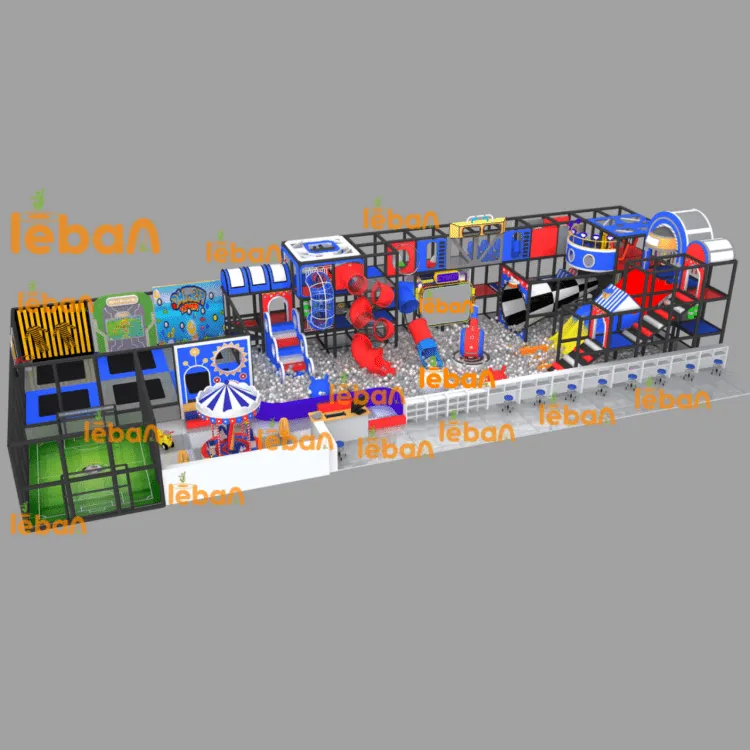Creating the Perfect Inflatable Play Space for Community Gatherings
Setting up an inflatable playground transforms any outdoor space into an exciting entertainment zone that delights children and puts smiles on parents' faces. Whether you're planning a community event, organizing a birthday party, or managing a public park, an inflatable playground offers endless possibilities for active fun and memorable experiences. This comprehensive guide will walk you through everything you need to know about properly setting up and maintaining these versatile play structures.
Essential Equipment and Safety Considerations
Core Components and Setup Materials
Before diving into the setup process, gathering all necessary equipment is crucial for a successful inflatable playground installation. The primary components include the inflatable structure itself, a heavy-duty blower, proper anchoring equipment, and safety mats. Extension cords rated for outdoor use, a GFCI-protected power source, and spare blower fuses are also essential. Remember to have a repair kit on hand that includes patches, adhesive, and scissors for any unexpected maintenance needs.
Quality ground stakes, sandbags, or water ballasts are vital for securing the inflatable playground, especially in varying weather conditions. For indoor setups, proper wall anchors or weighted systems must be used instead of traditional ground stakes. Having a moisture meter can help determine if the ground is too wet for safe operation.
Safety Equipment and Monitoring Tools
Safety should always be the top priority when operating an inflatable playground. Essential safety equipment includes entrance and exit mats, proper signage displaying rules and age restrictions, and boundary markers to establish clear zones around the structure. A first-aid kit, emergency contact information, and an incident report log should be readily available.
Monitoring tools such as an anemometer for wind speed measurement and a decibel meter to check noise levels can help ensure safe operating conditions. Having walkie-talkies or a reliable communication system between operators and supervisors is also recommended for larger setups or events.

Site Selection and Preparation Process
Evaluating the Perfect Location
Choosing the right location for your inflatable playground requires careful consideration of several factors. The space should be flat, level, and free from obstacles like trees, power lines, or sharp objects. Measure the area to ensure it's at least 5 feet larger than the inflatable's dimensions on all sides to create proper safety zones.
Consider the proximity to utilities, especially power sources, and ensure adequate drainage in case of rain. The surface should be grass, concrete, or asphalt - avoid setting up on gravel or rough terrain. Take note of natural wind barriers and sun exposure to create the most comfortable environment for users.
Ground Preparation Techniques
Proper ground preparation is crucial for safe operation of an inflatable playground. Start by removing all debris, rocks, and sharp objects from the area. For grass surfaces, mow the area short and remove clippings. If setting up on concrete or asphalt, sweep thoroughly and check for cracks or hazards.
Use ground tarps or protective sheets underneath the inflatable to prevent moisture seepage and reduce wear on the bottom surface. Ensure the ground is as level as possible, using shims or padding where necessary to prevent tilting or instability.
Installation and Inflation Procedures
Step-by-Step Setup Protocol
The installation process begins with carefully unrolling the inflatable playground in the prepared area. Position the structure so that the entrance faces away from potential hazards and allows easy supervision. Connect the blower tube securely, ensuring there are no twists or kinks that could restrict airflow.
Before inflation, double-check all zippers and vents are properly closed. Position the blower on stable ground, connecting it to your power source through a GFCI-protected outlet. As the structure inflates, guide it to prevent snagging or uneven expansion. Once fully inflated, immediately begin securing it with your chosen anchoring system.
Securing and Stabilizing Techniques
Proper anchoring is critical for the safe operation of any inflatable playground. Install stakes at all designated anchor points, driving them at a 45-degree angle away from the structure for maximum holding power. In situations where stakes cannot be used, employ sandbags or water ballasts, ensuring their weight is appropriate for the size of your inflatable.
Test the stability of your anchoring system by applying pressure at various points around the structure. Pay special attention to high-stress areas like entrance points and tall sections. Regularly check anchor points throughout operation, especially during windy conditions or heavy use.
Operational Management and Maintenance
Daily Operating Procedures
Successful operation of an inflatable playground requires consistent monitoring and management. Establish clear opening and closing procedures, including thorough safety checks at regular intervals. Monitor weather conditions continuously, especially wind speed, which should not exceed 25 mph.
Implement a capacity management system to prevent overcrowding, and ensure proper supervision ratios are maintained at all times. Keep detailed logs of inspections, incidents, and maintenance activities. Regular cleaning of high-touch surfaces and enforcement of safety rules will help maintain a safe and enjoyable environment.
Maintenance and Care Protocols
Regular maintenance extends the life of your inflatable playground and ensures safe operation. Conduct daily visual inspections for wear, tears, or damage. Clean surfaces regularly with appropriate cleaning solutions, paying special attention to high-traffic areas and seams.
Develop a schedule for more thorough inspections of blowers, anchor points, and safety features. Address any repairs immediately, using manufacturer-approved materials and techniques. Store the inflatable properly when not in use, ensuring it's clean and completely dry to prevent mold and mildew.
Frequently Asked Questions
What weather conditions are unsafe for inflatable playground operation?
Inflatable playgrounds should not operate in winds exceeding 25 mph, during rain or lightning, or when temperatures are extremely high or low. Always monitor weather forecasts and have an evacuation plan ready.
How often should safety inspections be performed?
Conduct visual safety inspections before each use, during operation at regular intervals, and at the end of each day. Complete more thorough structural inspections weekly, and schedule professional inspections annually or as recommended by the manufacturer.
What is the recommended supervision ratio for inflatable playgrounds?
The recommended supervision ratio varies by the size and type of inflatable, but generally, maintain at least one trained supervisor for every 10-12 children. For more complex structures or younger age groups, increase the supervision ratio accordingly.

